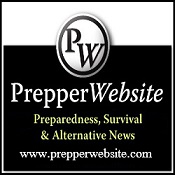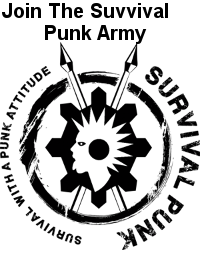ON THE ROAD DENTISTRY By Sherman A. House DDS
Up today I have a guest post from my friend Dr. House on survival dentistry. I knew he would be able to cover the topic without going covering topics best left for those that want to go to dental school. He knocked out a great article, I enjoyed and and know you will too!
ON THE ROAD DENTISTRY
By Sherman A. House DDS
Summing up the amount of training required to completely manage a dental emergency into one article is like trying to give you plans to build a space shuttle using only items found below your kitchen sink…it’s possible, just not very probable. I spent 10 years in a university, a medical college, and at the hospital to learn all of this stuff and it’s surrounding cloud of minutiae to learn how to fix most anything that can happen to your teeth and jaws, but, managing a dental emergency in a survival situation as a layperson IS possible!
EARLY DETECTION/PREVENTING INFECTION
The clever rhyming scheme I like to use to remind students about dental priorities in a survival or austere situation are, “Early Detection/Preventing Infection.” By following these two basic principles of care, you can keep your own mouth out of the hurt locker, as well as help others who are experiencing a dental emergency.
The BEST way to prevent a dental emergency from occurring, is to PREVENT it from happening. In the busy, inner-city dental clinic I run, 95% of the patients that I see are there because they’ve had a long-standing dental issue, that has become emergent because they LET it. MOST toothaches that are the result of dental caries (cavities) take a LONG time to manifest into a full blown toothache, and even longer to result in an abscessed tooth. Sometimes, it can take a couple of years. The point is, that NEARLY all of these cases would be avoidable if the person had their teeth examined and radiographed (to see cavities that are located between the teeth, outside the view of the naked eye) or pathology (disease processes) that have established themselves in the bones of the jaws.
Going to the dentist every six months doesn’t make your dentist rich! Most people take very poor care of their teeth. They are in a constant state of use! Imagine if your mouth was a roof on a house…and that it was under a constant barrage of abuse, from weather, small rocks falling on it, acid being spilled on it, and occasionally being cleaned, with only a brush. How long do you think it would last? Before you could act, you’d have holes in your roof, water pouring in, bugs crawling around…it would be chaotic. Our mouths are no different. Neglect them, and they’ll remind you why that is a bad idea! So, the first, “step,” in PREVENTING dental emergencies is to seek the care of a competent professional at least every six months, and possibly even more if you suffer from periodontal disease (also known as, “gum disease.”)
The next step is to brush and floss, regularly. Now, everyone claims that they brush and floss three times a day, but the evidence I see in people’s mouths tells me otherwise. Brushing is relatively easy to get patients to comply with, because who doesn’t want to have clean teeth and fresh breath? Does anyone like that feeling of having, “furry,” teeth? I sure don’t! Flossing is the difficult sell. Most people tell me, “I don’t like to floss because my gums bleed.” The reason that your gums bleed is because they have plaque (a combination of food particles, bacteria, bacterial by-products and sugars) irritating them. The flossing removes the plaque, and thus the gums no longer bleed. So, if your gums bleed when flossing, if you floss twice a day for three or four days, they will STOP bleeding, your breath will be better, and you’ll have a healthier mouth. I recommend a soft-bristled toothbrush (medium and hard bristles will actually scrub away tooth and gum tissue, and thus I don’t recommend them) and shred-resistant dental floss. Mouthwash IS NOT an acceptable substitute for flossing, but it can be used in addition to brushing and flossing if you so choose. Same goes for the water pik.
PREVENTING INFECTION
In addition to keeping your teeth clean and healthy, there ARE incidents that can occur that will put you from a healthy condition, to an infected condition, quickly. One event is an avulsed or intruded tooth. “Avulsion,” refers to when a tooth is forcibly ripped from the socket. I see the majority of these in sporting accidents, bicycle and motorcycle wrecks, and also falls in and around the home. Coffee tables are NOT your friend! When this happens, there is often a combination of dental damage (the tooth), soft tissue damage (the gums) and hard tissue damage (the bone) surrounding the area. With great care, an avulsed tooth can be replaced, and with definitive dental treatment, it can be restored, usually, into a healthy state of being. Worst case scenario, is that that tooth is lost, and a dental implant would be used to replace it. IN A SURVIVAL SITUATION if I had a tooth get knocked out, I would leave it out! Our bodies will heal up the hole, wonderfully, and you can get it fixed, definitively, at a later date…
Not a week goes by where I don’t have a patient in my chair that has attempted to remove their own teeth. They are always infected, and they rarely get out the entire crown and root of the tooth. What I recommend is to NEVER take out your own tooth! You should also NOT attempt to take out a tooth on someone else unless you’ve been trained AND you’re really good at it! I extract, literally, thousands of teeth a year, and every once in awhile, I have a tooth that will give me fits. I always get it out, but sometimes it takes a bit of work and time! I also instruct other dentists on how to remove teeth, and many of them are not 100% competent at it. So, don’t take your health into your own hands…get professional help.
If you ignore everything I’ve said so far, and end up getting a dental infection, “On The Road,” then there are a few things you can keep in your medical kit to hold you over until you can get to definitive care. Dental wax CAN be used to fill broken and/or cracked teeth, at least temporarily. You can also keep a form of penicillin, like Amoxicillin 500mg (one tablet, four times a day, for seven days) or Clindamycin 300mg if you are allergic to Penicillin, (one tablet four times a day for 10 days) in your kit for infection prophylaxis or treatment.
What’s the BEST thing you can keep in your emergency medical stash for dental issues? A DENTIST! If you don’t have a friend or acquaintance who is a dentist, ask your family dentist about your concerns. Most will be glad to help. If not, you’ve got a friend in me, and I’m always glad to help where I can. You can visit my Facebook page at The Real Doctor House. You can ask questions, see videos, read viewer mail inquiries, and see some of the, “behind the scenes,” looks of what goes on in an emergency dental practice.

PHOTO CAPTIONS
This is an abscess from an otherwise healthy, 16 year old boy. His entire face and jaw was swollen, and given two more days, he would have been gravely ill or dead. Luckily, I was able to extract this tooth in time, and remove the pus that was filling the spaces around the tooth. With definitive surgical care and antibiotics, he recovered and did fine!
If your mouth looks like this, you are a dental time-bomb just WAITING for an abscess and/or miserable toothaches. Get it fixed BEFORE it becomes debilitating and potentially life-threatening!























Comments are closed.